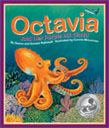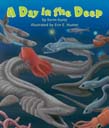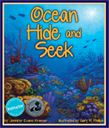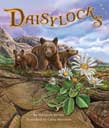new posts in all blogs
Viewing: Blog Posts Tagged with: Science and World News, Most Recent at Top [Help]
Results 1 - 12 of 12
How to use this Page
You are viewing the most recent posts tagged with the words: Science and World News in the JacketFlap blog reader. What is a tag? Think of a tag as a keyword or category label. Tags can both help you find posts on JacketFlap.com as well as provide an easy way for you to "remember" and classify posts for later recall. Try adding a tag yourself by clicking "Add a tag" below a post's header. Scroll down through the list of Recent Posts in the left column and click on a post title that sounds interesting. You can view all posts from a specific blog by clicking the Blog name in the right column, or you can click a 'More Posts from this Blog' link in any individual post.
By: Arbordale Publishing,
on 4/4/2016
Blog:
(
Login to Add to MyJacketFlap)
JacketFlap tags:
Zoos,
Science and World News,
albino animals,
animal helpers,
Sanctuaries,
Arbordale Posts,
wildlife rehabilitators,
picture books,
Education,
animals,
Aquariums,
Add a tag
Spring is here, and it’s a time of year when many baby animals are emerging from their winter hiding place. Some of those babies may be a little different.
Recently, Antler Ridge Sanctuary in New Jersey rescued a litter of eastern gray squirrels, but one of those squirrels had a pure white coat. The rare white fur means that the squirrel has a form of albinism.
A white coat with red eyes m eans that the animal is an albino. Some animals are leucistic;
eans that the animal is an albino. Some animals are leucistic;
these white-coated animals have their natural colored eyes but their lack of color makes them stand out from the other animals of the same species. Other animals are piebald; they have patches of albino white mixed with patches of their natural color.
The lack of color puts these special babies at risk. In a world of browns, greens, and greys the pure white is very hard to disguise from predators. Often albino animals, especially small prey animals such as squirrels are targeted by larger animals and don’t make it in the wild for very long.
Of course not all white animals have albinism, for example arctic animals such as polar bears and arctic foxes are white to blend with their surroundings.
However, without the help of rescuers many albino animals would have been lost in the wild, some of these animals are rehabilitated and then live out their days in zoos or aquariums.
To learn more read about the albino squirrel read the article here!
And…find out more about animal rehabilitators and the work zookeepers and aquarist in these books by author Jennifer Keats Curtis with the help of organizations around the country.
 Animal Helpers: Wildlife Rehabilitators
Animal Helpers: Wildlife Rehabilitators
Like humans, animals can get sick or hurt. People see doctors. Pets have veterinarians. What happens to wild animals when they are injured, become ill, or are orphaned? Often, wildlife rehabilitators are called to their rescue. This photographic journal takes readers “behind the scenes” at four different wildlife rehabilitation centers. Fall in love with these animals as they are nursed back to health and released back to the wild when possible. This is the first of a photographic series introducing the different ways and the many people who care for a wide variety of animals.
 Animal Helpers: Zoos
Animal Helpers: Zoos
Zoos are amazing places to see and learn about the many native and exotic of animals that inhabit this world. Some animals are plentiful while others are threatened or in danger of extinction. Zookeepers not only feed and care for these animals, they may also be helping to conserve and protect whole species through breeding and “head start” programs. Follow the extraordinary duties of these unusual animal helpers in this behind-the-scenes photographic journal.
 Animal Helpers: Aquariums
Animal Helpers: Aquariums
Where else could you stay dry while visiting aquatic animals from around the world? Only in an aquarium can you visit and learn about all these different local and exotic animals. Aquarium staff care for and teach about these animals, as well as work to conserve and protect threatened and endangered species. Follow this behind-the-scenes photographic journal as it leads you into the wondrous world of aquariums and the animal helpers who work there.


By: Arbordale Publishing,
on 1/8/2016
Blog:
(
Login to Add to MyJacketFlap)
JacketFlap tags:
Children's Books,
media,
headlines,
glaciers,
scientific method,
glaciers melting,
Science and World News,
Arbordale Posts,
explore science,
inquiry learning,
science bias,
Add a tag
“Scientists confirm that East Antarctica’s biggest glacier is melting from below” – Washington Post
“Alaska’s Glaciers Melt Faster as Climate Change Speeds Up” – Climate Change News
“NW’s melting glaciers, in a word: ‘DISASTROUS’ – Seattle Times
“Melting glaciers blamed for subtle slowing of Earth’s rotation” – Yahoo News
“Earth May Spin Faster as Glaciers Melt” – Discovery News
“How the world’s newest glacier is forming on Washington’s Mouth St. Helens…site of the deadliest volcanic eruption in US history” – Daily Mail. Com

With so many conflicting studies and headlines being announced about glaciers and climate change, how do you know what to believe?
When we learn about the scientific process, the first steps involve asking questions to form a hypothesis and then testing that hypothesis. Some studies are very narrowly focused others are broader, and the results make assumptions based on the findings of the experiment. Because the scientific method is always questioning, the curious must repeatedly confirm that data is accurate and without bias to take the findings as fact.
But…what happens when a scientist has a strong bias toward the outcome? Errors and biases in studies are caught all the time. One of the more famous biased studies in history was Crania Americana by Samuel George Morton. Read more about it here.
Media bias is another reason so many conflicting headlines are reported each day. When a reporter has a story to write they may interview a scientist who has done a study that closely aligns to their angle, or focus on one fact in a much larger study. This is why it is so important to dig deeper into research to find the truth and even conduct studies of your own.
So… Are the glaciers melting? The answer is yes, some glaciers have greatly reduced in size. Here is a time-lapse video of a glacier melting at a rapid pace.
Are glaciers growing? Yes, there is a new glacier growing into the crater of Mount St. Helens.
Read The Glaciers are Melting! and get the facts that may help you come to your own conclusion!
 Chicken Little may have thought the sky was falling but Peter Pika is sure the glaciers are melting and is off to talk to the Mountain Monarch about it. Joined along the way by friends Tammy Ptarmigan, Sally Squirrel, Mandy Marmot, and Harry Hare, they all wonder what will happen to them if the glaciers melt. Where will they live, how will they survive? When Wiley Wolverine tries to trick them, can the Mountain Monarch save them? More importantly, can the Mountain Monarch stop the glaciers from melting?
Chicken Little may have thought the sky was falling but Peter Pika is sure the glaciers are melting and is off to talk to the Mountain Monarch about it. Joined along the way by friends Tammy Ptarmigan, Sally Squirrel, Mandy Marmot, and Harry Hare, they all wonder what will happen to them if the glaciers melt. Where will they live, how will they survive? When Wiley Wolverine tries to trick them, can the Mountain Monarch save them? More importantly, can the Mountain Monarch stop the glaciers from melting?


By: Arbordale Publishing,
on 12/7/2015
Blog:
(
Login to Add to MyJacketFlap)
JacketFlap tags:
Children's Books,
penguins,
educational books,
staying warm,
emperor penguin,
Science and World News,
science news,
Arbordale Posts,
penguin kids books,
Add a tag
 When you live in Antarctica and wear a tuxedo it is a group activity to keep warm on a cold winter day. Scientists have documented that emperor penguins form huddles to stay warm in the frigid temperatures of this habitat.
When you live in Antarctica and wear a tuxedo it is a group activity to keep warm on a cold winter day. Scientists have documented that emperor penguins form huddles to stay warm in the frigid temperatures of this habitat.
The penguins have a sophisticated system of rotation to make sure that no one gets too cold, but by studying the Pointe Géologie Archipelago colony researchers have found that huddles are sometimes very short-lived activities for the birds.
When the cold sets in or the wind kicks up, the birds seek out a huddle. The temperatures in the huddle can become much higher than the birds comfort level and researchers first believed that the huddles would break up from the center, but after spending years observing these animals they found that one single bird leaving from the outside can break up a huddle.
While scientists may have originally thought huddles were a simple process in the penguin lifestyle, there is much more that can be learned from the way that these birds socially regulate their temperatures.
Read the article: A Single Penguin can break up a huddle!
To learn more about penguins here are some great stories to share with your little ones:
 The Penguin Lady
The Penguin Lady
by Carol A Cole, illus. by Sherry Rogers
Penelope Parker lives with penguins! Short ones, tall ones; young and old—the penguins are from all over the Southern Hemisphere including some that live near the equator! Do the penguin antics prove too much for her to handle? Children count and then compare and contrast the different penguin species as they learn geography.
 Polar Bears and Penguins: A Compare and Contrast Book
Polar Bears and Penguins: A Compare and Contrast Book
by Katharine Hall
Polar bears and penguins may like cold weather but they live at opposite ends of the Earth. What do these animals have in common and how are they different? You might see them near each other at a zoo but they would never be found in the same habitats in the wild. Compare and contrast these polar animals through stunning photographs.


By: Arbordale Publishing,
on 5/29/2015
Blog:
(
Login to Add to MyJacketFlap)
JacketFlap tags:
day in the deep,
light adaptations,
ocean hide and seek,
animals,
science books,
Educational,
octopus,
octavia,
Featured Books,
Science and World News,
science news,
Add a tag

One amazingly interesting creature is the octopus; this cephalopod can twist and turn its body into many shapes, suction to all types of surfaces, and use a cloud of ink to distract predators. This week, researchers uncovered the California two-spot octopus’s ability to sense light through its skin.
When the scientist shone a beam of light on the skin of an octopus the chromatophores (pigmented structures in the skin) expanded and the skin changed color. When the light was turned off, the chromatophores contracted again and the octopus was back to its original color. Why does this happen? Scientists determined that the octopus’ skin has proteins called opsins that work with the chromatophores for this reaction to occur.
(Read more about the experiments here)
Changing colors is nothing new in the octopus species; they can become red with anger, or transparent in sunlight. The more tools the creature has to camouflage itself the better chance for survival in the wild depths of the ocean where predators are abundant.
To learn more about the octopus or how other animals use light in the depths of the ocean here is a short underwater reading list!

Octavia and her Purple Ink Cloud
Octavia Octopus and her sea-animal friends love playing camouflage games to practice how they would hide from a “big, hungry creature.” Octavia, however, just cannot seem to get her colors right when she tries to shoot her purple ink cloud. What happens when the big, hungry shark shows up looking for his dinner? This creative book introduces basic colors along with the camouflage techniques of various sea animals; a great introduction to marine biology!
 A Day in the Deep
A Day in the Deep
Travel deep into the ocean way below the surface and you’ll encounter some creatures you never knew existed! This book takes you on a journey through the dark depths of the sea towards the ocean floor. Most ecosystems need sunlight, but deep in the ocean where the sun doesn’t shine animals have adapted some very interesting ways to see, protect themselves, and eat. Discover the unique habitats, adaptations, and food chains of these deep -sea creatures.
 Ocean Hide and Seek
Ocean Hide and Seek
The sea is a place of mystery, where animals big and small play hide and seek! Can you imagine a shark hiding in the light? What about a clownfish in plain sight? Don’t believe it? Then, sink into the deep blue sea with Jennifer Evans Kramer and Ocean Hide and Seek! Surround yourself with the vibrant ocean illustrations of Gary R. Phillips. The ocean is an old, old place, and the exotic animals in the depths have learned to adapt to their surroundings to survive. Can you find the creatures hidden on every page? Or will you, too, be fooled by an ancient, underwater disguise?


By: Arbordale Publishing,
on 3/27/2015
Blog:
(
Login to Add to MyJacketFlap)
JacketFlap tags:
shape family,
science,
study,
reading,
Book Giveaway,
neuroscience,
Friday Reads,
Science and World News,
animal partners,
daisylocks,
Add a tag
In a recent neuroscience study, researchers focused on the visual side of the brain and concluded that volunteers saw words and pictures and not individual letters. This research could prove very helpful in understanding how struggling readers process words, and improve tactics for teaching.
Arbordale truly believes that reading, and being read to, is a very important part of growing up. So, we are closing out the work with a Friday Reads Giveaway! Comment on this post to be entered to win these three Arbordale books!



Learn more about the Journal of Neuroscience article on Science News.


On Monday, the Duke and Duchess of Cambridge announced the arrival of their bouncing baby boy, His Royal Highness Prince George Alexander Louis of Cambridge! The world has already fallen love with this little prince who is not even a week old.
At Sylvan Dell Publishing, we are always delighted by baby news. Except, the newborns we usually hear about live in a zoo, not the royal palace. Every morning and once again around lunch time, we take a break from our hard work to check our email for a special announcement. Right on schedule, we have an email waiting for us from ZooBorns letting us know about the newest additions to zoos and aquariums around the world. ZooBorns serve as conservation animal ambassadors hoping to educate their followers about the importance of taking care of animals in the wild and the ways in which zoos and aquariums are aiding the cause.

In the months of June and July, we have seen the arrivals of a baby Asian elephant, eight meerkat pups, a pair of red pandas, a litter of Malayan tiger cubs, cheetah triplets, and a baby tapir ( the most recent announcement). Our love for animals extends from the pages of our books to the small moments of our day. If you want to join the “baby watch”, of animals that is, visit ZooBorns.com and sign up for email updates.

Finally, we want to congratulate all the new moms this summer! And look for our own exciting announcement of Sylvan Dell newbies coming this September.


 Cunning, sly and beautiful are words often associated with a fox. This commonly found wild animal does not have the best reputation in literature throughout history. They are often found playing tricks to get what they want. Ferdinand is not that kind of fox!
Cunning, sly and beautiful are words often associated with a fox. This commonly found wild animal does not have the best reputation in literature throughout history. They are often found playing tricks to get what they want. Ferdinand is not that kind of fox!
Naturalist Mary Holland spent a summer photographing Ferdinand and his family to capture a real life way a fox kit grows up. The amazingly cute photos are paired with a wealth of fox information. Ferdinand learns how to adapt to his habitat, hunt for food and even play with his siblings.
Learn even more about how foxes adapt to their environment in the For Creative Minds section in the back of the book. Here you may see why foxes get their bad reputation.
Visit www.sylvandellpublishing.com for quizzes, activities and facts about Ferdinand. Also sign up to win a copy on Goodreads!
Here is a silly sentence activity, Have Fun!
FoxSillySentences



By: sylvandellpublishing,
on 1/30/2013
Blog:
Sylvan Dell Publishing's Blog
(
Login to Add to MyJacketFlap)
JacketFlap tags:
kids,
history,
learning,
Education,
einstein,
science,
Educational,
light,
facts,
interesting,
Sylvan Dell,
teachable moment,
quantum,
whoa,
Science and World News,
pop tarts,
Add a tag

Quick! What’s behind you right now? Did you peek over to see desks, the wallpaper, students, books, or toys? Were those objects there even before you looked at them? Are they there now, even though you’re reading this instead of seeing them? As strange as it sounds, some scientists believe that nothing exists definitely until someone measures it, such as you did with your eyes and ears. These scientists work in a field of science called Quantum Mechanics.
In the early 1900s, smarty-pants scientists like Albert Einstein, Niels Bohr, and Werner Heisenberg studied, experimented and argued over the question of what light was made of. Light was very mysterious to scientists at the time, because in some experiments it acted like a wave, similar to the invisible radio and magnetic waves all around us. In other experiments though, light acted like a particle, a solid object like a Pop Tart, a textbook, a penny, a skyscraper… Anything that’s in one place and that weighs something is a particle. It didn’t seem to make sense for something to be an invisible wave and a solid particle at the same time, but in test after test, light was both! You might think it was time for these scientists to turn in their labcoats and get new jobs… this was too hard to figure out! Instead of giving up though, the scientists continued experimenting and studying the subject until they found a solution: light is a wave until it gets observed, then it becomes a solid particle!
This was huge news for scientists. If light acts like this, then other solid objects may not be so solid after all too. The scientists studying Quantum Mechanics presented this thought-provoking possibility: that that the world is actually a wave of possibilities until we observe it, then it becomes the solid place we can feel, touch, taste and smell. It’s a bit like hiding trash under your bed: if you can’t see it, it’s not there!



By: sylvandellpublishing,
on 9/12/2012
Blog:
Sylvan Dell Publishing's Blog
(
Login to Add to MyJacketFlap)
JacketFlap tags:
picture books,
Education,
science,
Educational,
Book Launches,
book launch,
Sylvan Dell News,
Science and World News,
science news,
west nile,
Add a tag
 What do The Most Dangerous and news reports of West Nile virus have in common, the mosquito. When Terri Fields wrote the story of a ferocious animal contest, she had no idea how topical the book would become at the release date.
What do The Most Dangerous and news reports of West Nile virus have in common, the mosquito. When Terri Fields wrote the story of a ferocious animal contest, she had no idea how topical the book would become at the release date.
With more than 1,000 cases reported in 38 states this outbreak is the largest in U.S. history according to the Center for Disease Control. Not all mosquitoes carry the West Nile virus and not everyone will show symptoms of the disease if bitten. However, it is important to protect yourself from mosquito bites, as they are proven to transmit several different diseases to humans and animals all over the world.
Even if a non West Nile mosquito bites you, they leave behind an itchy and uncomfortable bump. The best way to protect yourself from a bite is use bug spray with Deet, wear long sleeves and long pants when you are outside and eliminate any standing water in your yard.
In The Most Dangerous, children will be excited by the parade of scary animals, but they will be surprised when the tiny mosquito shows up to the contest. Although the disease is not mentioned in the book, it is a great way to kick off a conversation about West Nile and mosquitoes with kids.
Learn more about The Most Dangerous!
 Dangerous animals from all over the world gather for the Most Dangerous Animal of All Contest. Snakes, spiders, sharks . . . who will the winner be? Deadly poison, huge teeth, razor -sharp horns, and fearsome feet are just a few of the ways that animals kill. Predators mean to kill. Prey simply defend themselves. And yet, the unexpected most deadly animal doesn’t mean to harm at all!
Dangerous animals from all over the world gather for the Most Dangerous Animal of All Contest. Snakes, spiders, sharks . . . who will the winner be? Deadly poison, huge teeth, razor -sharp horns, and fearsome feet are just a few of the ways that animals kill. Predators mean to kill. Prey simply defend themselves. And yet, the unexpected most deadly animal doesn’t mean to harm at all!
Terri Fields (Burro’s Tortillas, The Most Dangerous) has written nineteen books which have garnered a number of awards including the Maud Hart Lovelace Award for Middle Grades Fiction, the Georgia Children’s Choice Award, being named to the Recommended Reading List for Chicago Public Schools, the TAYSHAS (Texas) Reading List, the Southwest Books of the Year List, and as one of the 100 Top Kid Picks in Children’s Books in Arizona. A long time desert-dweller, Ms Fields has enjoyed sharing her books with children all over the world. In addition to writing, Ms. Fields is also a educator who has been named Arizona Teacher of the Year, ING Education Innovator for Arizona, and been selected as one of the twenty teachers on the All-USA Teacher Team of the nation’s top educators. Terri Fields has worked with students in first through twelfth grades. Ms. Fields sees the world around her in terms of the wonderful stories it reveals. Visit Terri’s website http://www.terrifields.com/.
Award-winning illustrator Laura Jacques is passionate about illustrating children’s books that focus on natural history, wildlife, and environmental awareness for children. In addition to illustrating The Most Dangerous, Baby Owl’s Rescue and Whistling Wings for Sylvan Dell, she has also illustrated For the Birds: The Life of Roger Tory Peterson, Squirrel Assist, At Home in the Rain Forest, and Wildlife Refuge: A Classroom Adventure. Her books have won several honors and awards, including “NSTA-CBC Outstanding Science Trade Books for Children” sponsored by the Children’s Book Council and the “KIND Children’s Book Award” sponsored by the Association for Humane and Environmental Education, a division of the Humane Society of the United States. For more information, visit Laura’s website: http://www.laurajacques.com.
September’s Book of the Month read The Most Dangerous here http://www.sylvandellpublishing.com/index.php!


 eans that the animal is an albino. Some animals are leucistic;
eans that the animal is an albino. Some animals are leucistic; Animal Helpers: Wildlife Rehabilitators
Animal Helpers: Wildlife Rehabilitators





 Chicken Little may have thought the sky was falling but Peter Pika is sure the glaciers are melting and is off to talk to the Mountain Monarch about it. Joined along the way by friends Tammy Ptarmigan, Sally Squirrel, Mandy Marmot, and Harry Hare, they all wonder what will happen to them if the glaciers melt. Where will they live, how will they survive? When Wiley Wolverine tries to trick them, can the Mountain Monarch save them? More importantly, can the Mountain Monarch stop the glaciers from melting?
Chicken Little may have thought the sky was falling but Peter Pika is sure the glaciers are melting and is off to talk to the Mountain Monarch about it. Joined along the way by friends Tammy Ptarmigan, Sally Squirrel, Mandy Marmot, and Harry Hare, they all wonder what will happen to them if the glaciers melt. Where will they live, how will they survive? When Wiley Wolverine tries to trick them, can the Mountain Monarch save them? More importantly, can the Mountain Monarch stop the glaciers from melting? When you live in Antarctica and wear a tuxedo it is a group activity to keep warm on a cold winter day. Scientists have documented that emperor penguins form huddles to stay warm in the frigid temperatures of this habitat.
When you live in Antarctica and wear a tuxedo it is a group activity to keep warm on a cold winter day. Scientists have documented that emperor penguins form huddles to stay warm in the frigid temperatures of this habitat.


















I’m a little nervous the Matrix is real, but I’m quite glad I can keep hiding trash under my bed.